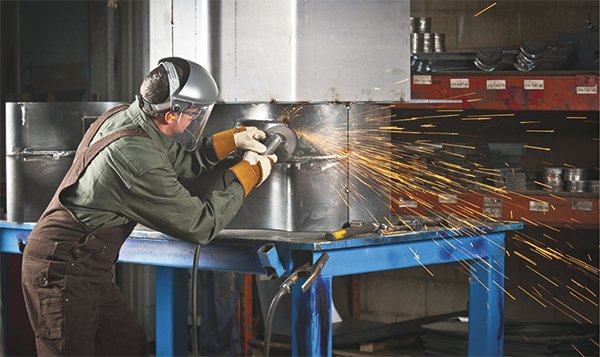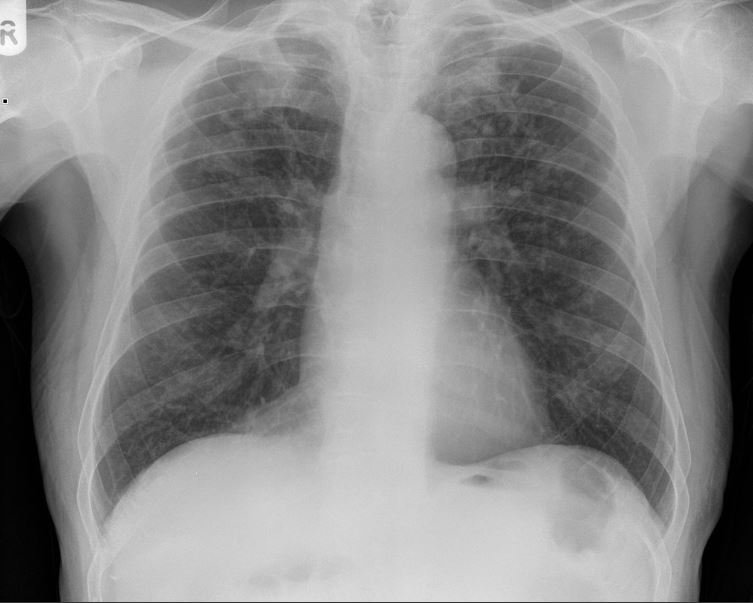For many workers, the hazards they face on the job aren’t limited to the equipment and tools they use. Environmental conditions can also pose serious health and safety risks, and an atmosphere with dust is certainly one of them.
If you’re in manufacturing, you know that dust seems to find its way everywhere and that regular work activities constantly generate more of it. It’s easy to ignore or overlook it, but it’s a hazard that needs to be taken seriously. Between 1980 and 2005, the Chemical Safety Board identified 281 combustible dust incidents that killed 119 workers and injured 718 – in addition to causing extensive property damage. Dust is no joke.
In this article, we’ll explain why dust is more dangerous than it seems and what steps employers and safety professionals can take to control it.

Takeaway: The best solution for controlling toxic or combustible dusts is to capture as much of it as possible at the source and then to use a dust collection system to help remove the dust that makes its way into the work environment.
Understanding Dust as a Workplace Hazard
Dust in the workplace isn’t the same as the dust you encounter in your home. The dust created by manufacturing operations can made of tiny particles of various substances like ceramic, powdered crystal, wood, concrete, and metal.
There are two features of this type of dust that make it a health and safety hazard: its toxicity and its combustibility.
Toxicity
In many instances, the dust produced by operations like sandblasting, cutting, and grinding will contain silica, a mineral compound that poses a severe health hazard.
Workers who are exposed to dust hazards on a regular basis, whether through dermal contact or inhalation, can develop allergic reactions, skin conditions like dermatitis, and various respiratory conditions.
Of these three, respiratory conditions tend to be the most serious. They can lead to chronic health issues, like occupational asthma, lung diseases like silicosis, or lung cancer (find out Everything You Should Know About Silicosis).
Explosive Risks
The explosive nature of some types of dust poses an entirely different – though no less important – risk to workers.
Combustible dust is the term for any fine material that can catch fire and explode when mixed with air. It includes a variety of substances, from sugar, flour, and grain to various types of metal.
Given the varieties of combustible dust, it’s no surprise that combustible dust explosions have happened in many different workplaces, including food and chemical manufacturing facilities.
Managing the risk requires good housekeeping practices to prevent significant quantities of combustible dust from accumulating in the first place.
How to Ensure Effective Dust Control
The most intuitive way to deal with dust is by sweeping it with a broom or blowing it away with compressed air. While these are better than nothing, they’re not effective methods for controlling dust in a workplace, and they don’t always do enough to eliminate the health and safety risks.
Here are some best practices for dust management.
1. Capture the Dust at Its Source
Any effective dust control program should capture as much dust as possible and capture it at the source. This generally involves moving airborne dust particles into a hood or machine connection point, through a duct system, and then to the dust collector.
2. Clean “Hidden” Areas Regularly
Make those who are responsible for cleaning the dust aware of any areas that are easy to overlook, like inside ventilation shafts, on top of support beams, and behind false ceilings. These areas are out of sight and often left alone, which results in excessive accumulations of dust.
3. Design a Dust-Free Workplace
Good workplace design can go a long way to preventing dust build-up. Eliminating or reducing flat, unused surfaces is a good way to make sure dust has nowhere to accumulate.
If your business undergoing renovations or retrofitting, you may want to implement some dust-combating designs. You’ll be controlling a hazard while also reducing the amount of time your workers have to spend on housekeeping tasks.
4. Properly Maintain Your Equipment and Service It Often
Ventilation equipment and systems only keep your workplace safe if they’re in proper working order. That’s why employers need to establish procedures to ensure all ventilation systems are inspected regularly, maintained according to manufacturer recommendations, and replaced as needed.
5. Understand the Properties of Your Materials
Part of taking the risk of dust in your workplace seriously is knowing just what you’re working with and communicating it to your employees.
Dust is a hazard that gets overlooked because too few people know what kinds of risks are involved. Once the dust in your workplace has been clearly identified as toxic or combustible, your employees will make greater efforts to minimize its accumulation.
Selecting a Dust Control System
There are lots of dust control system options out there. Here are three key things you’ll want to consider when selecting one.
Productivity
It’s best to look for a unit that is easily installed and has a filter that can be cleaned or replaced easily. Filters with large surface areas are usually best.
Manufacturer
Opt for a manufacturer that has plenty of experience with dust collection systems and a good reputation in the industry. You want to ensure that their products meet all regulations and that they offer support if you have questions or if something isn’t working quite right.
Ergonomics
Employers don’t always consider ergonomic factors when purchasing dust control equipment, but it can make a big difference to those who will be cleaning the filter on a regular basis. Look for a dust collection system that offers easy access to purge levers.
Regulations to Abide By
For employers whose work processes generate dust, there are some important regulations to follow.
OSHA’s general duty clause, first and foremost, requires that employers provide workers with an environment that is free of all known and recognized hazards likely to cause serious harm or death. This includes explosive and toxic dust. To ensure compliance, employers should conduct thorough and regular assessments of all manufacturing activities to determine:
- If dust is a potential hazard
- Who may be affected by the dust
- Whether the dust is combustible
- How to best mitigate the risk to workers (e.g. dust collection system, respiratory protection, gloves or other forms of protective clothing)
OSHA also requires workplaces that break, chip, cut, or drill into concrete have a dust collection system that captures at least 99 percent of the dust created during the operations. This helps ensure that toxic dust remains at levels well below the permissible exposure levels and that combustible dust doesn’t have an opportunity to build up throughout the workday.
In workplaces where employees may be exposed to respirable crystalline silica dust, OSHA requires employers to implement engineering and administrative controls and develop a written plan that includes four key items:
- A list of tasks where workers may be exposed to silica
- A description of engineering controls, work practices, and respiratory protection used to limit exposure
- A description of housekeeping measures used to limit exposure
- A description of procedures used to restrict access to work areas in order to minimize employee exposure
Conclusion
Controlling dust risks isn’t just about ensuring workers wear the right PPE for the job. The best solution is always to capture as much dust as possible at the source, and then to use a dust collection system to help remove the small percentage that makes its way into the work environment. No matter the industry or size of the organization, businesses must take dust control seriously to prevent harm to workers and damage to equipment.



